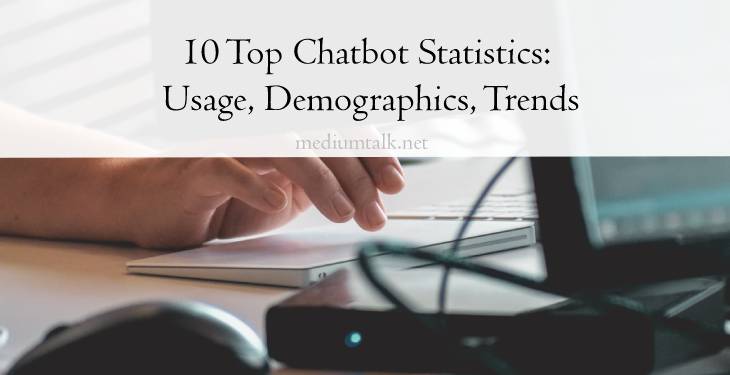Chatbots have become a popular tool for businesses looking to improve customer experience and automate customer support. With advancements in artificial intelligence and natural language processing, chatbots are becoming more intelligent and capable of handling a wide range of customer queries. In this article, we will explore the top 10 chatbot statistics that illustrate the usage, demographics, and trends of chatbots.

1. Chatbots Are Becoming Increasingly Popular With Businesses
According to a study by Oracle, 80% of businesses plan to use chatbots by 2020. Chatbots are being adopted by businesses of all sizes and across various industries to improve customer service, reduce costs, and increase efficiency.
2. Customers Are Becoming More Accepting of Chatbot
A survey by LivePerson found that 67% of consumers have used a chatbot for customer support in the past year, and 40% of those users didn’t realize they were interacting with a chatbot. This shows that customers are becoming more accepting of chatbots and are willing to engage with them if they provide a seamless experience.
3. Chatbots Can Reduce Customer Support Costs
According to Juniper Research, chatbots can save businesses up to $8 billion per year by 2022. Chatbots can handle a high volume of customer queries simultaneously, reducing the need for human agents and lowering customer support costs.
4. Chatbots Are Most Popular With Millennials
A survey by Ubisend found that 55% of millennials have interacted with a chatbot for customer support in the past year, compared to 35% of baby boomers. This highlights the importance of chatbots for businesses looking to target younger demographics.
5. Chatbots Can Improve Customer Satisfaction
According to a survey by Aspect Software, 44% of customers prefer chatbots for customer service, and 65% of customers are open to using them in the future. Chatbots can provide 24/7 support, quick response times, and personalized experiences, which can improve customer satisfaction.
6. Chatbots Can Increase Sales
According to a study by Drift, businesses that use chatbots see a 10% increase in sales. Chatbots can provide personalized recommendations, assist with product searches, and help customers make purchasing decisions, which can increase sales and revenue.

7. Chatbots Can Handle a Wide Range of Queries
Advancements in natural language processing have enabled chatbots to handle a wide range of queries, including complex ones. According to a study by Chatbots Magazine, 45% of end-users prefer chatbots as the primary mode of communication for customer service inquiries.
8. Chatbots Can Provide Personalized Experiences
With access to customer data, chatbots can provide personalized experiences, including personalized product recommendations, targeted promotions, and tailored responses to customer queries. This can improve customer engagement and loyalty.
9. Chatbots Are Becoming More Intelligent
Advancements in artificial intelligence are making chatbots more intelligent and capable of handling complex queries. According to a study by PwC, 72% of business executives believe that AI will be a significant business advantage in the future.
10. Chatbots Are Part of a Broader Trend Toward Automation
Chatbots are part of a broader trend toward automation in customer service and support. According to a study by McKinsey, automation can save businesses up to 60% on operational costs. Chatbots are just one example of how businesses are leveraging technology to streamline operations and improve customer experience.
In conclusion, chatbots are becoming an increasingly popular tool for businesses looking to improve customer experience, reduce costs, and increase efficiency. With advancements in artificial intelligence and natural language processing, chatbots are becoming more intelligent and capable of handling complex queries. As customer acceptance of chatbots continues to grow, businesses that fail to adopt this technology risk falling behind their competitors.
